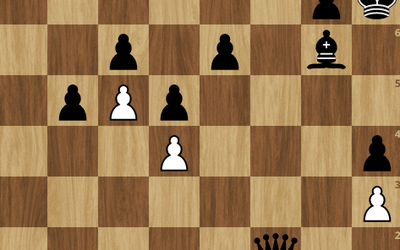
Are there really more chess moves than the atoms in the observable universe?
Chess is a game that has captivated the minds of players for centuries with its intricate strategy and countless possibilities. The age-old question of whether there are more possible chess moves than there are atoms in the universe is a thought-provoking one. In this article, we will delve into the fascinating world of chess, explore the mind-boggling number of potential moves, and compare it to the vastness of the universe. Is it possible that this ancient board game contains more variations than the very building blocks of reality? Let's find out.The Chessboard: A World of Possibilities
Chess is played on an 8x8 grid, which means there are 64 squares in total. At the start of the game, each player has 16 pieces, including one king, one queen, two rooks, two knights, two bishops, and eight pawns. With these pieces, players make moves according to specific rules, with the ultimate goal being to checkmate the opponent's king.
The Number of Possible Chess Moves
Calculating the exact number of possible chess moves is a complex task. However, we can make some rough estimations to understand the scale of possibilities involved. On average, in a typical chess game, there are about 40 possible legal moves for each player per turn. This includes all the different ways each of the 16 pieces can move. If we consider just the first two moves by each player, there are approximately 8,902 possible positions.
As the game progresses, the number of possible positions explodes. After three moves by each player, there are over 197,742 possible positions. By the fourth move, this number climbs to more than 7 million. It quickly becomes clear that the number of possible chess positions is vast and grows exponentially as the game continues.
Atoms in the Universe: A Mind-Boggling Quantity
Estimates of the number of atoms in the observable universe vary, but it's generally believed to be around 10^80 to 10^82 atoms. This is an astonishingly large number, and it represents the fundamental building blocks of matter that make up everything we see in the cosmos.
Chess Moves vs. Atoms
When we compare the number of possible chess positions to the number of atoms in the universe, it becomes evident that there are indeed more possible chess moves. Even after just a few moves, the number of chess positions surpasses the number of atoms by several orders of magnitude. Chess is a game with an almost incomprehensible number of potential outcomes, making it a rich and endlessly challenging domain for players and researchers alike.
In Conclusion
While it may be difficult to fathom the true extent of the possibilities in a game of chess, it's clear that there are more potential moves on a chessboard than there are atoms in the universe. Chess's complexity and the sheer number of permutations it offers are a testament to the depth and richness of this ancient game. Whether you're a chess enthusiast or a casual player, the chess universe continues to provide a limitless space for exploration and strategy.

